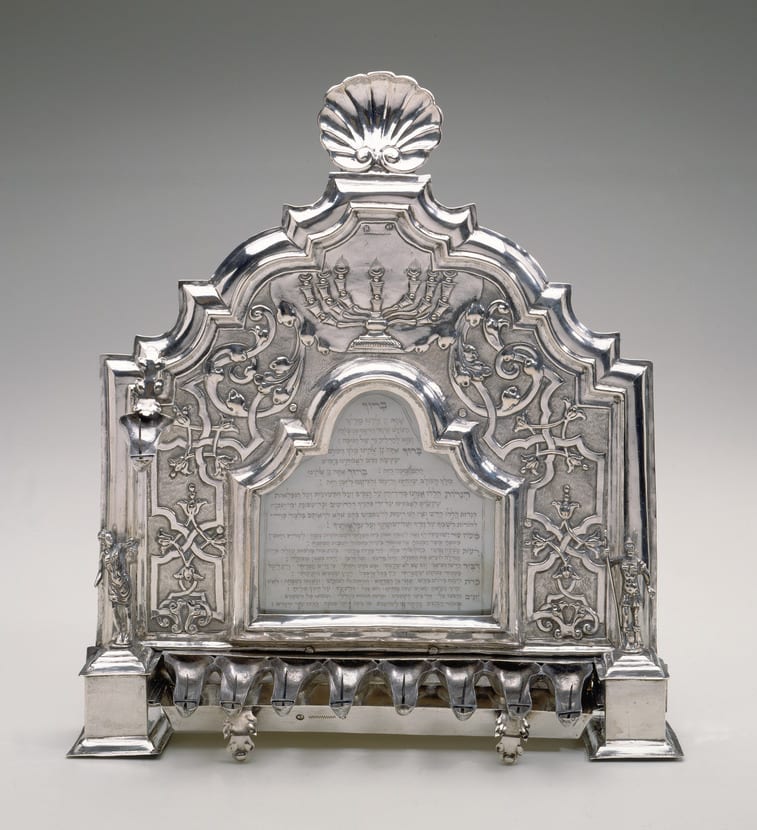
- Object Name:
- Hanukkah Lamp
- Artist/Maker:
- Matheus Staedlein
- Bio:
- German, active 1716 - 1735
- Place Made:
- Nuremberg (Germany)
- Date:
- 1716-35
- Medium:
- Silver: repoussé, engraved, traced, punched, and cast; ink on parchment
- Dimensions:
- 13 5/8 × 12 1/16 × 5 3/8 in. (34.6 × 30.6 × 13.7 cm)
- Credit Line:
- Gift of Dr. Harry G. Friedman
- Accession Number:
- F 197
Not On View
Nuremberg silversmiths produced a distinct type of Hanukkah lamp, characterized by a parchment inset in the center inscribed with the Hanukkah blessings. The backplates are all cartouche-shaped with a heavy molded frame. Similar frames are found on secular objects such as mirrors, sconces, and plates that date between the 1710s and 1730s and are therefore contemporaneous with this lamp. Most lamps of this type also have cast figures of Judith and a soldier, possibly meant to be Judah Maccabee.
The marked examples date between 1699 and 1781. During this period, Jews were forbidden to live in Nuremberg, and were only allowed to enter the city for the day to buy goods, provided they paid a tax. It was on such a purchasing expedition that this lamp, and others of its type, might have been commissioned from a Nuremberg silversmith. Alternatively, it may have been obtained at one of the regional fairs. Only six works by the maker of the museum's lamp, Matheus Staedlein, are known, five of them Jewish ceremonial objects, suggesting a mostly Jewish clientele, despite the residence prohibition. Staedlein's mark has only recently been identified through the work of the Forschungsprojeckt zur Nürnberger Goldschmiedekunst at the Germanisches Nationalmuseum.
The marked examples date between 1699 and 1781. During this period, Jews were forbidden to live in Nuremberg, and were only allowed to enter the city for the day to buy goods, provided they paid a tax. It was on such a purchasing expedition that this lamp, and others of its type, might have been commissioned from a Nuremberg silversmith. Alternatively, it may have been obtained at one of the regional fairs. Only six works by the maker of the museum's lamp, Matheus Staedlein, are known, five of them Jewish ceremonial objects, suggesting a mostly Jewish clientele, despite the residence prohibition. Staedlein's mark has only recently been identified through the work of the Forschungsprojeckt zur Nürnberger Goldschmiedekunst at the Germanisches Nationalmuseum.
Information may change as a result of ongoing research.